Seldom is an award-winning hotel and a birding hotspot found in the same place. Nestling among the mountains of the Drakensberg, near the beginnings of the great Tugela River, is a paradise for nature lovers called The Cavern. This family run hotel is conveniently situated half way between Gauteng and Durban and offers very affordable accommodation, excellent food and a wonderful friendly atmosphere. Birding enthusiasts from South Africa and overseas come here to enjoy the rich and varied birdlife. The Cavern boasts a bird list spiced with more than 20 endemics, some exciting rarities and a garden full of avian surprises.
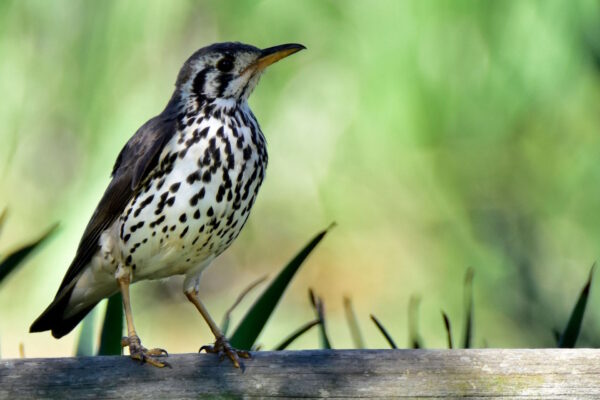
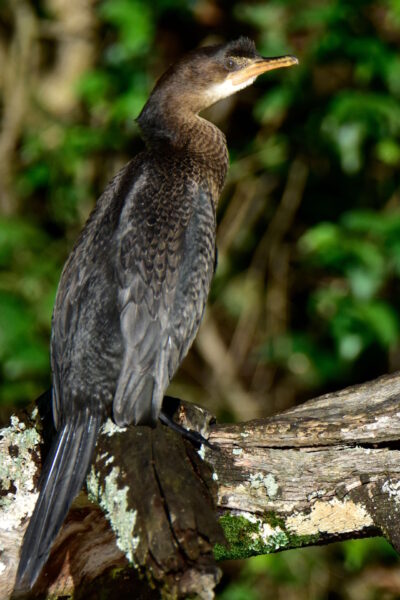
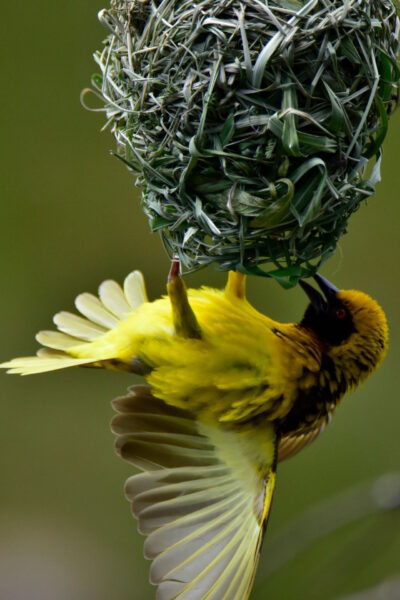
Situated at the head of a valley, the south-facing slopes are clothed in montane forest, and drier north facing aspects offer unspoilt grassland with Protea caffra and a myriad of wonderful wildflowers, with Acacia sieberiana a surprising component of the warmer hilly folds. The hotel sits comfortably between forest and grassland and the extensive gardens are filled with a happy mix of local indigenous flora and flowering exotics, the boundary between garden and veld gloriously blurred, making it the perfect spot for birds and birders alike. The resident pair of Black Duck has included the ponds in their territory and Giant Kingfishers compete with fishermen for fat trout. Two small dams and a twinkling mountain stream are part of the garden and here you can see the tiny Malachite and have a chance to compare it to the elusive Half-collared Kingfisher.
Flowering Aloes, Calpurnia and the exuberant nectar feast offered by the Mountain Bottlebrush make sure that the gardens are always filled with sunbirds. In the April to June autumn season, Gurney’s Sugarbirds and Malachite Sunbirds jostle for ownership of the aloe spires all around you as you enjoy a cooling drink or buffet lunch. Early morning bird walks begin on this terrace and before leaving the reception area one can “tick” at least twenty species. Mocking and Familiar Chats join Redwing Starlings and doves on the thatched roof, swallows and swifts provide the aerial acrobatics, while an African Goshawk clicks his territorial claims. The view back down the valley is panoramic and punctuated by tall trees – even just sitting here for the morning would produce a bird list to be proud of. The resident flock of Arrowmarked Babblers provide comic relief and Cape and Masked Weavers decorate the trees with their woven nests.
A very short walk takes you into the Fern Forest where Cape Batis, Olive Woodpecker, Yellowthroated Warbler, Olive Bushshrike and Bush Blackcap await you. Just beyond the garden you are free to roam the 3000 ha of unspoilt montane grassland that is The Cavern nature reserve. Gazing skywards you could be rewarded with Lammergeyer, Cape Vulture, Longcrested Eagle, Bald Ibis and many more. The sky really is the limit at this wonderful birding destination.
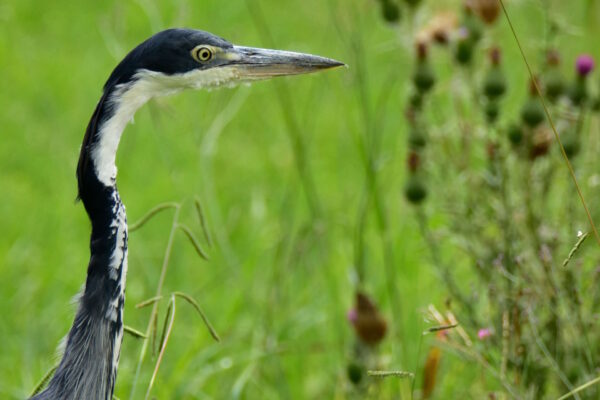
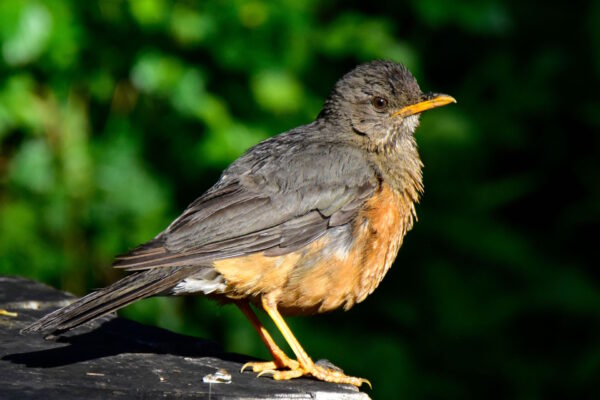
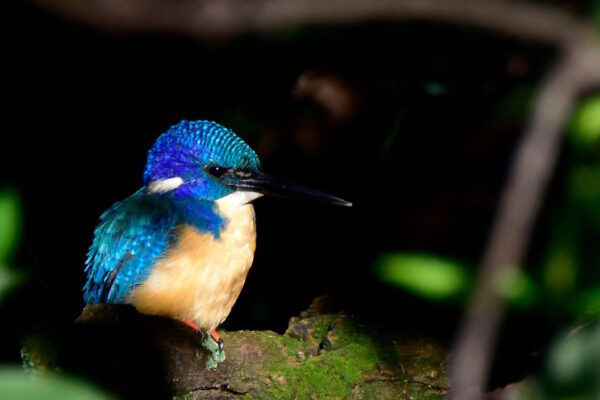
Rare birds are always making the news, even though a little lost soul blundering beyond its usual range is rarely of significance. Recently (October 2003) the Cape White-eye is in the lime-light at The Cavern. This is one of our most common species, especially in the garden. But right now only about half of these birds are of resident stock. They can be recognized, as in the case throughout KZN, by being mainly dull yellow-green with uniformly coloured underparts. However, birds from the Southern Cape and beyond have a pale grey belly, and these have arrived in large numbers. They can only have come from somewhere hundreds of kms away in the west. White-eyes do not normally migrate, but may be copying other species of birds that are known to move eastwards in response to drought, returning, sometimes years later, when wetter conditions return to their normal haunts. Perhaps our garden White-eyes are giving us a sort of long-term weather report.
Watching birds, what they do and what they say, is a continual source of wonder and enjoyment to me. I was struck by how much we can learn about birds and their habits by just noticing little seemingly unimportant things. A walk round the bird-friendly hotel gardens is always rewarding and this morning was no different. A rather weedy rendering of the Klaas’s Cuckoo call came from a thick shrubbery – a Chorister Robin at work. The robin never gets the call quite perfect, sometimes good enough to fool us mere mortals for a while, but if you listen carefully you can detect a wobble here and there and start working out which mimic is at work. The Chorister Robin is reputed to be the best there is; this is most likely the reason for the name ‘chorister’; a member of a choir, a singer. This one gave us renderings of a few other calls and then suddenly switched to that of the Crowned Eagle. Now we were confused, because the Crowned Eagle does not occur at The Cavern so how on earth did this robin learn the song? Bit of lateral thinking here and we worked out that the Chorister Robin is one of the many altitudinal migrants we have in KwaZulu-Natal; birds that move down hill to a lower and warmer altitude during the cold winter months. So this particular bird had spent some time down in the Karkloof or Dargle during winter and had learnt the call of the Crowned Eagle there, and brought it back to impress the lady robins of The Cavern. This is the only possible explanation and we were pretty pleased with our detective work. Sometimes it works the other way; we can be alerted to look for a bird we were not sure was in that area, just by hearing a robin mimicking it. Real forensic stuff this – very stimulating and exciting.
A common sight in dairy or beef farming country is a field filled with cattle, and each animal with a Cattle Egret standing close to its head. One of the old fashioned names for the Cattle Egret, one that I grew up with, is the Tick Bird. This must have led people to believe that the egrets were eating ticks off the cattle, and when the birds occasionally hitch a ride on a cow’s back it is even easier to believe. The truth is that the egrets are there, at the front end of the cow, in the best place to catch the grasshoppers and other delicious insects that the cows disturb as they move around finding the tastiest grass clumps. Not quite a symbiotic relationship as the cow gets nothing from the association, but it is certainly a peaceful partnership, and who knows, maybe cows enjoy the company of egrets? The less attractive job of eating the ticks is left to the oxpeckers.
